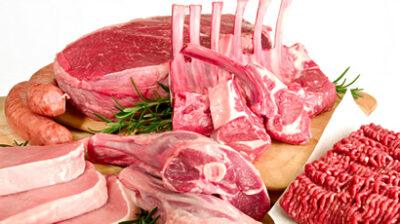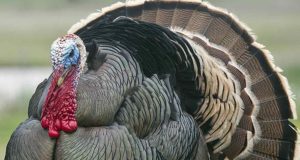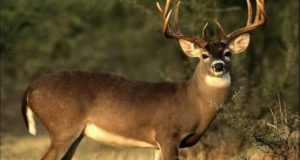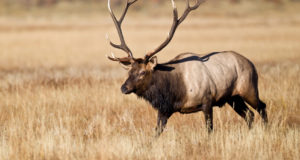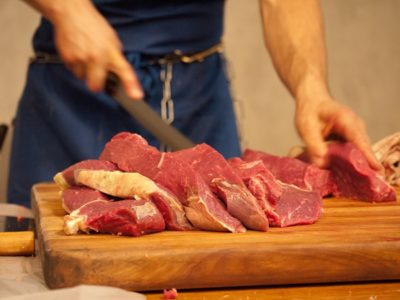
Using every single part of an animal when butchering is a great homesteading idea to incorporate.
As children in school we were often taught, Native Americans used every part of an animal when butchering, from nose to tail. Nothing was wasted, not even bones or sinew. In today’s world we buy our choice cuts from the grocery store and hardly think of where that meat came from.
Modern hunters and butchers tend to toss offal, bones, hooves and extra fat, when these things in fact can be re-purposed. I do want to point out that certain parts of animals that could once be useful (e.g. turning bones into tools) really don’t apply to our lives now, but can still be a fun project. There are plenty of people who claim their bone tools work just as well as metal and plastic tools.
Let’s take a look at how homesteaders, hunters, survivalists and anyone else can waste as little of an animal as possible.
Animal Hides
One of the most valuable parts of an animal when butchering, besides the meat is the hide. Anything from squirrel to moose can have the hide skinned, tanned and made into something useful. Smaller critters like ground squirrels or wild rabbit often have pretty delicate, thin skin, so they can be a bit tricky to tan. It’s best to use small game animal hides for decoration, homemade toys, small pouches, etc.
Large game animal and livestock hides are perfect for use around the house as rugs, blankets, bags and even clothing. These bigger hides are a bit labor intensive but definitely worth the work. Don’t need a hide? Instead of throwing it away, you can sell it to someone who wants to tan it themselves.
You can remove hair from hide completely to make leather. Deerskin leather, for example, is especially soft when treated properly. Use rawhide to make straps, laces and more unusual items like a drum head. If you really want to get creative (and a bit off-the-wall) you can use a male animal’s scrotum as a pouch. Talk about using every part of the animal when butchering!
Bones and Antlers
Many people often throw away another major part of a carcass, the bones. This is a real shame because bones are extremely versatile. First and foremost, bones can make excellent soup stock regardless of whether it’s an old hen or an elk. Depending on your preferences, you might want to experiment with this a bit. You can harvest bone marrow harvested and use it in your food.
If you enjoy crafts and working with your hands, use bones and antlers. Some bones are stronger than antlers, so choose which you use carefully based on the project. You can use bones to make needles or awls, knives, knapping tools, fish hooks, flutes, arrowheads, jewelry, buttons and so much more. Antler is so similar in nature that you can carve it and make the same items as you would with bone.
You can also compost bones or take the extra step to grind it up as bone meal. This type of fertilizer is amazing for gardens and doesn’t cost you a thing. Don’t forget about Fido. Dog-safe bones (uncooked!) can be a great treat.
Offal
Offal includes organ meat and entrails. The use of organ meat really depends on whether you enjoy eating it or not. It is a food that people either love or hate. Before eating ANY organs, please check with a local wildlife department and see if there are any known parasites or illnesses in area. If you are ever in doubt, don’t eat it.
Organ meat like the liver, kidneys, pancreas and heart is a real delicacy in some areas. Save those for yourself if you enjoy them. Otherwise, they can make excellent dog food or an addition to compost. Though it is somewhat wasteful in a sense, tossing out offal into the woods away from residency will allow scavengers in the area to get a meal.
You can use intestines for sausage skins after thoroughly cleaning and drying them. You can also twist and dry them for use as cord. Some people use the stomach or bladder for water storage after being processed properly.
Other Product Of Animal Butchering.
- Head/skull/teeth — If you don’t want to save the skull you can sell it or trade it. Skin and clean the head to make a soup or stew stock. You can also eat the tongue. Use the brain to tan hides. Finally, use the teeth as buttons, jewelry or ground up to make homemade sandpaper.
- Fat — Use fat in cooking to add extra calories, particularly useful in a survival situation. You can render the fat to also make fuel for torches or use as a lubricant for machines.
- Feather — Feathers aren’t generally as easy to use as a hide but still shouldn’t be wasted. You can gather down for bedding or clothing and use other feathers for fishing lures or craft projects.
- Hooves — Hooves are a bit tricky to use but can be processed into glue, gelatin or oil (Neatsfoot).
- Tendons/Sinew — Sinew makes excellent cordage. You can use sinew for lacing and sewing. Since it can be absorbed by the body, when properly processed and sterilized it can be used for sutures.
- Urine — Empty the bladder and use the urine to help remove hair on hide for leathermaking. If you shot a female game animal you can also save the urine to use as a lure.
- Blood — Blood can be throw in your compost to make an awesome fertilizer. If you like blood pudding or blood soup, you can use it for that as well.
There are countless ingenious, albeit sometimes odd, ways to use all the parts of game animal or livestock (duck’s feet ashtray holders, anyone?) that it’s fairly impossible to list them all. This is, after all, how our ancestors lived.
 Off The Grid News Better Ideas For Off The Grid Living
Off The Grid News Better Ideas For Off The Grid Living

